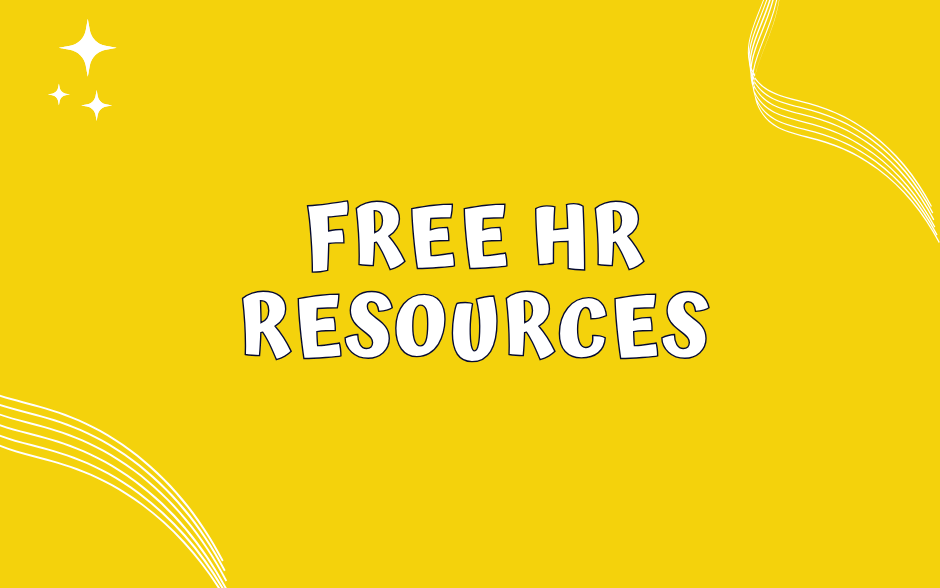HR Templates Every UK Business Needs to Thrive, Save Time & Comply with the law
Running a business means wearing many hats – but HR shouldn’t be one of the areas where you cut corners. Over the past 8 years as a Fractional HR Director, I’ve seen the chaos that happens when businesses don’t have the right HR documents in place: disputes, lost productivity, even expensive tribunal claims.
The solution? HR templates. Done properly, they save you time, keep you compliant with UK employment law, and give your managers the consistency they need to manage people fairly.
Here are the 10 essential HR templates I recommend every SME has in place – and why they make such a difference.
Top 10 Essential HR Templates
Here are the 10 essential HR templates every business should have and why they matter.
1. Employment Contract Template
Every employee in the UK is entitled to a written statement of terms. A strong employment contract covers salary, hours, duties, notice, benefits, and company policies.
👉 Why it’s beneficial:
-
Sets clear expectations from day one.
-
Protects you in disputes over pay, hours, or duties.
-
Demonstrates professionalism, which boosts trust.
Without this, you’re wide open to misunderstandings and legal challenges.
2. Employee Handbook Template
The handbook is your rulebook and culture guide rolled into one. It outlines company values, HR policies, and procedures — from health & safety to equal opportunities and data protection.
👉 Why it’s beneficial:
-
Provides consistency and fairness across the business.
-
Reduces “he said/she said” by setting out rules in writing.
-
Reinforces your company culture and values.
It’s one of the most powerful tools for aligning behaviour with business goals.
3. Job Description Template
A well-written job description defines responsibilities, required skills, reporting lines, and performance measures.
👉 Why it’s beneficial:
-
Attracts the right candidates with clarity.
-
Provides a fair benchmark for performance reviews.
-
Prevents scope creep and disputes over “what’s in my job.”
It’s not just for recruitment — it’s a performance and accountability tool.
4. Onboarding Templates (Including Probation Forms)
Onboarding templates include checklists, welcome packs, and probation review forms. They guide new hires through admin, training, and cultural integration.
👉 Why it’s beneficial:
-
Creates a smooth, professional first impression.
-
Reduces early resignations (which are costly).
-
Ensures probation is managed fairly and consistently.
Companies with structured onboarding see higher retention and faster productivity.
5. Performance Appraisal Template (with Goal Setting)
This template structures appraisal conversations around performance, behaviours, and future goals.
👉 Why it’s beneficial:
-
Ensures consistent, fair reviews across teams.
-
Aligns individual goals with business strategy.
-
Builds accountability and motivates staff.
Without this, appraisals become patchy or biased, which damages morale and performance.
6. Disciplinary Templates
Covers invitation letters, outcome letters, and records of disciplinary action.
👉 Why it’s beneficial:
-
Provides a legally compliant process.
-
Protects you from unfair dismissal claims.
-
Creates consistency in how managers handle misconduct.
Without a clear process, you risk damaging trust and ending up in tribunal.
7. Grievance Templates
Includes grievance submission forms, investigation checklists, and outcome letters.
👉 Why it’s beneficial:
-
Ensures every complaint is taken seriously and handled fairly.
-
Protects your reputation as a fair employer.
-
Reduces risk of escalation to external claims.
Handled well, grievances can even improve culture by addressing root issues.
8. Exit Interview Form
Captures feedback when employees leave, including reasons for leaving, satisfaction levels, and suggestions for improvement.
👉 Why it’s beneficial:
-
Provides data to reduce future turnover.
-
Highlights leadership or culture issues before they grow.
-
Ends the relationship professionally and respectfully.
Exits done badly damage your employer brand; exits done well can future-proof your business.
9. Redundancy Checklist & Letter Templates
Structured checklists and letters (consultation invite, outcome, appeal) for managing redundancies.
👉 Why it’s beneficial:
-
Keeps you compliant with UK redundancy law.
-
Reduces legal risk and tribunal claims.
-
Treats people with dignity during a tough process.
Redundancies are high-risk. Templates ensure you get the process right, fairly and lawfully.
10. Sickness Absence Letters & Form Templates
Includes return-to-work forms, absence notification letters, and long-term absence correspondence.
👉 Why it’s beneficial:
-
Creates a fair, consistent approach to absence management.
-
Identifies patterns early (to support or address).
-
Protects you against discrimination claims.
Poor absence management is one of the biggest drains on SME productivity. Templates keep it controlled and professional.
Implementing HR Templates Effectively
-
Customise them – reflect your culture and industry.
-
Train managers – so they apply them consistently.
-
Review regularly – UK law changes frequently.
-
Use HR software – for automation and audit trails.
FAQs
Q: Can’t I just download free templates online?
A: Many free ones aren’t UK-compliant and could put you at legal risk. Always use templates written with UK employment law in mind.
Q: How often should I update them?
A: At least annually, or immediately if employment law changes.
Q: Do small businesses really need all of these?
A: Yes. Even with just one employee, you’re legally required to have certain documents in place. Getting them early makes scaling easier.
Q: What’s the difference between disciplinary and grievance templates?
A: Disciplinary is when the business raises an issue with an employee. Grievance is when the employee raises an issue with the business. You need both.
Q: What happens if I don’t have these templates?
A: You risk inconsistent decisions, disputes, reputational damage, and costly tribunal claims.
Q: Can HR templates improve culture, not just compliance?
A: Absolutely. They create fairness, transparency, and consistency — all of which are crucial for building trust and high-performing teams.
Conclusion
HR templates aren’t just “paperwork.” They’re the framework that protects your business, supports your people, and strengthens your culture. With the right templates in place, you save time, reduce risk, and create consistency across your organisation.
As a CEO, you don’t have hours to waste drafting letters or firefighting people issues. By investing in these 10 essential templates, you give yourself peace of mind — and your managers the tools they need to run a fair, compliant, and productive workplace.











